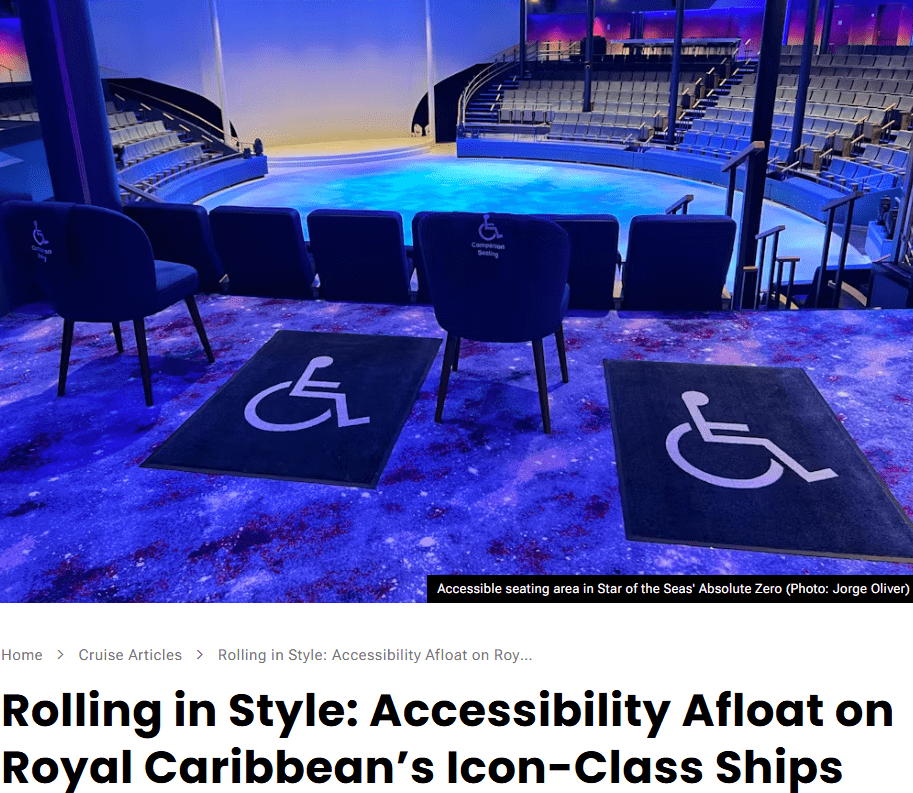A big thank you to Susan J. Young for highlighting Andrew Garnett’s experience aboard Royal…
Electric Wheelchair vs Mobility Scooter: Which One is Right for You?
Choosing between an electric wheelchair and a mobility scooter depends on your body, environment, and travel plans. As Special Needs At Sea, we guide travelers with evidence-based comparison, clarifying controls, seating, portability, and accessibility. Learn how device design affects comfort, safety, independence, and cruise readiness, so you select equipment that fits daily routines and destinations.
Table of Contents
Key Differences
What Are They?
An electric wheelchair is a powered wheelchair driven by a joystick or alternative controls. It’s a medical device intended to restore mobility when walking or precise steering isn’t feasible.
A mobility scooter is a powered scooter with a tiller handlebar. It’s generally a consumer product suited to people who can sit upright and steer with both hands for longer stretches.
Design and Performance
Maneuverability
Power chairs come in front-wheel, mid-wheel, or rear-wheel drive. Mid-wheel models pivot tightly, with turning radii often around 20–25 inches.
Scooters carry a longer wheelbase. Typical turning radii are 35–55 inches, tighter on three-wheel units but with slightly less lateral stability than four-wheel designs due to center of gravity.
Speed and Obstacle Handling
Speeds commonly run 3.5–6 mph for electric wheelchairs and 4–8 mph for scooters. Both handle small thresholds, with curb climbs around 1–2 inches and safe grades near 6–10 degrees being typical.
Safety Features
Safety features include regenerative or electromagnetic brakes, anti-tip wheels or casters, and often lighting and reflectors.
Seating
Seating on chairs ranges from simple captain’s seats to complex positioning systems. Scooters offer swivel seats with modest contouring.
Best Use Environments
Indoors favors compact chairs. Outdoors rewards scooters on straighter routes. In public spaces, wheelchairs are accommodated and many venues allow scooters when safety permits.
Key Considerations
- Primary environment
- Control method comfort
- Seating and posture needs
- Storage space
Here’s a more human-friendly version:
Choosing What’s Right for You
Start by honestly assessing your own body and abilities. How well can you sit upright without support? Can you hold your head steady throughout the day without getting tired? Think about your arm and shoulder strength—not just for a few minutes, but for hours of daily use. If you need help with posture, require pressure relief, or use specialized seating for medical reasons, an electric wheelchair is likely the better choice. Wheelchairs provide precise positioning and excel at navigating tight indoor spaces.
If you can sit comfortably on your own and have good control of both hands and shoulders to steer handlebars all day, a mobility scooter might work well for you. Scooters are simpler to operate and more comfortable for longer, straightforward trips.
Getting In and Out
Think about how you transfer onto seats. Do you stand and pivot, or do you slide across? The height of the seat, the style of armrests, and whether the seat swivels all affect how easily and safely you can get on and off.
Measure Your World
Take measurements of your home. Check doorway widths and the narrowest parts of your hallways. Look at thresholds and what type of flooring you have. Walk around your neighborhood and pay attention to the sidewalks, curb ramps, and street lighting. If you use public transportation, check the aisle widths and space for turning.
Planning to travel? Verify that hotel elevators and room doorways can accommodate your device.
Ownership costs maintenance and support
Total ownership cost includes the purchase price, batteries, maintenance, service access, and downtime. Power wheelchairs typically cost more upfront due to complex electronics and seating, while scooters are often cheaper initially but may require more out-of-pocket service when purchased through retail channels. Battery choice significantly impacts cost and care: sealed lead-acid batteries (gel or AGM) are less expensive, offer 8–20 mile range, require 6–10 hour charges, and last about 300–500 cycles, while lithium-ion batteries cost more but provide 10–30+ mile range, 3–6 hour charges, roughly 800–1,200 cycles, and better tolerance for partial charging.
For air travel, confirm your battery type, carry the UN 38.3 test summary for certain lithium packs, and follow airline watt-hour and terminal-protection rules.
Regular maintenance is straightforward: choose between pneumatic tires for comfort or solid/foam-filled for low upkeep, check brakes regularly, keep controls centered and responsive, ventilate the charger and avoid extension cords, and store in cool, dry conditions. Parts availability and service networks are generally stronger for power wheelchairs, while scooters may use generic parts but have fewer mobile technicians available.
Warranties vary—frames typically last longer than electronics, and batteries usually have limited coverage—so budget for battery replacement and annual service.
Decision framework and travel readiness
Start with priorities. If precise indoor maneuverability, customized seating, and joystick control matter most, choose an electric wheelchair. If longer outdoor trips, stable tiller steering, and straightforward transport appeal, choose a mobility scooter. Then validate against your routines: door widths, elevator clearances, the way you transfer, and who lifts or secures the device. Match the control style you trust to the environments you use most—carpets and queues versus promenades and piers.
Build confidence before buying. Arrange safety training to practice tight turns, ramp approaches, and controlled stops. Take test drives on surfaces like those you’ll encounter. Use short-term rentals for a weekend or cruise mockup to confirm endurance and comfort over full days.
- Device dimensions, turning diameter, and weight
- Battery type and airline documentation
- Dock ramps and accessible stateroom measurements
- Charging needs and spare parts
Timing matters. If needs are evolving or trips are occasional, rent first; purchase after a successful fitting session that dials in seating, controls, and transport method. Special Needs At Sea coordinates equipment to match itineraries, ship layouts, port accessibility, and airline requirements, so your choice works from curb to cabin.
Conclusion
An informed comparison between an electric wheelchair and a mobility scooter starts with your health, terrain, and travel goals. Prioritize fit, maneuverability, and transport logistics, then verify service, regulations, and budget. At Special Needs At Sea/Special Needs Group, we help align reliable information with real-world needs, so your chosen device sustains comfort, safety, and confident mobility at home and away.




